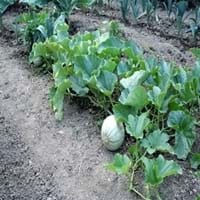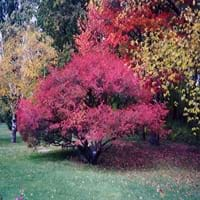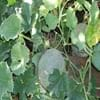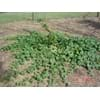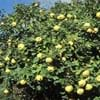Life Span
Annual
Perennial
Origin
Hybrid origin, Africa
Europe, Western Asia
Types
C melo subsp melo
Euonymus fortunei, Euonymus alatus, Euonymus europaeus
Habitat
gardens, Temperate Regions, Terrestrial
Dappled Shade, Shady Edge, Sunny Edge, Woodland Garden
USDA Hardiness Zone
Not Available
4-7
Sunset Zone
2a, 2b, 3a, 3b, 4, 5, 6, 7, 8, 9, 10, 11, 12, 13, 14, 15, 16, 17, 18, 19, 20, 21, 22, 23, 24
1a, 1b, 2a, 2b, 3a, 3b, 4, 5, 6, 7, 8, 9, 14, 15, 16
Habit
Vining/Climbing
Upright/Erect
Flower Color
Yellow
Yellow green
Flower Color Modifier
Bicolor
Not Available
Fruit Color
White, Yellow, Light Yellow, Gold, Tan, Sandy Brown
Pink, Purple, Red
Leaf Color in Spring
Green, Light Green
Green
Leaf Color in Summer
Green, Light Green
Green
Leaf Color in Fall
Green, Light Green
Red
Leaf Color in Winter
Light Green
Not Available
Leaf Shape
Oval
Lanceolate to elliptical
Plant Season
Summer, Fall
Fall
Sunlight
Full Sun
Full Sun, Partial Sun, Partial shade
Growth Rate
Very Fast
Fast
Type of Soil
Loam
Clay, Loam, Sand
The pH of Soil
Neutral
Acidic, Neutral, Alkaline
Soil Drainage
Well drained
Well drained
Bloom Time
Indeterminate
Late Spring
Tolerances
Drought
Drought
Where to Plant?
Container, Ground
Ground, Pot
How to Plant?
Seedlings, Transplanting
Cuttings, Seedlings
Plant Maintenance
Medium
Medium
Watering Requirements
Do Not over Water, Keep the ground moist but not water-logged, Never Over-water, Requires a lot of watering, Requires regular watering, Requires watering in the growing season, Water Deeply
Average Water Needs, Do Not over Water
In Summer
Lots of watering
Lots of watering
In Spring
Moderate
Moderate
In Winter
Average Water
Average Water
Soil pH
Neutral
Acidic, Neutral, Alkaline
Soil Type
Loam
Clay, Loam, Sand
Soil Drainage Capacity
Well drained
Well drained
Sun Exposure
Full Sun
Full Sun, Partial Sun, Partial shade
Pruning
Remove Vines
Remove damaged leaves, Remove dead branches, Remove dead leaves
Fertilizers
All-Purpose Liquid Fertilizer
organic fertlizers
Pests and Diseases
Red blotch
Powdery mildew, Vine weevils
Plant Tolerance
Drought
Drought
Flowers
Showy
Insignificant
Flower Petal Number
Single
Single
Foliage Texture
Coarse
Medium
Foliage Sheen
Matte
Glossy
Attracts
Not Available
Birds
Allergy
Abdominal pain, breathing problems, Diarrhea, Dizziness, Nausea, Vomiting
Mild Allergen
Aesthetic Uses
Not Used For Aesthetic Purpose
Showy Purposes
Beauty Benefits
Not Available
Not Available
Environmental Uses
Air purification
Air purification
Medicinal Uses
anti-cancer, Antioxidants, Cardiovascular problems, Combats Stress, Eye Problems, Immunity, Insomnia
Alterative, Hepatic, Laxative, Purgative, Tonic
Part of Plant Used
Fruits
Bark, Seeds, Wood
Other Uses
Economic Purpose, Employed in herbal medicine, Used As Food
Edible yellow dye is obtained, Used as essential oil, Yields a volatile oil that is used in soap making
Used As Indoor Plant
No
Yes
Used As Outdoor Plant
Yes
Yes
Garden Design
Edible, Fruit / Fruit Tree, Herb / Vegetable, Vine
Hedges, Screening, Wind Break
Botanical Name
CUCUMIS melo
EUONYMUS europaeus 'Aldenhamensis'
Common Name
Cantaloupe, Casaba Melon, Honey Dew, Melon, Muskmelon
Spindle Tree, Common Spindle, European Spindle
In Hindi
खरबूजा
Spindle Tree
In German
Cantaloup Melone
Spindelbaum
In French
Cantaloup
Spindle Arbre
In Spanish
Cantalupo
Árbol del husillo
In Greek
Πεπονάκι
ατράκτου Δέντρο
In Portuguese
Cantalupo
Árvore spindle
In Polish
Kantalupa
Wrzeciono Drzewo
In Latin
cantaloupe
Ligno colos
Phylum
Tracheophyta
Magnoliophyta
Class
Magnoliopsida
Magnoliopsida
Order
Cucurbitales
Celastrales
Family
Cucurbitaceae
Celastraceae
Clade
Angiosperms, Eudicots, Rosids
Angiosperms, Eudicots, Rosids
Tribe
Melothrieae
Euonymeae
Subfamily
Cucurbitoideae
Celastroideae
Number of Species
Not Available
Not Available
Properties of Cantaloupe and Spindle Tree
Wondering what are the properties of Cantaloupe and Spindle Tree? We provide you with everything About Cantaloupe and Spindle Tree. Cantaloupe doesn't have thorns and Spindle Tree doesn't have thorns. Also Cantaloupe does not have fragrant flowers. Cantaloupe has allergic reactions like Abdominal pain, breathing problems, Diarrhea, Dizziness, Nausea and Vomiting and Spindle Tree has allergic reactions like Abdominal pain, breathing problems, Diarrhea, Dizziness, Nausea and Vomiting. Compare all the properties and characteristics of these two plants. Find out which of these plant can be used as indoor plant. If you are interested to decorate your house and garden, find out aesthetic uses, compare them and select the plant which will beautify your surrounding. Along with beautification, try comparing medicinal and edible uses of Cantaloupe and Spindle Tree and you can choose the plant having best and most benefits.
Season and Care of Cantaloupe and Spindle Tree
Season and care of Cantaloupe and Spindle Tree is important to know. While considering everything about Cantaloupe and Spindle Tree Care, growing season is an essential factor. Cantaloupe season is Summer and Fall and Spindle Tree season is Summer and Fall. The type of soil for Cantaloupe is Loam and for Spindle Tree is Clay, Loam, Sand while the PH of soil for Cantaloupe is Neutral and for Spindle Tree is Acidic, Neutral, Alkaline.
Cantaloupe and Spindle Tree Physical Information
Cantaloupe and Spindle Tree physical information is very important for comparison. Cantaloupe height is 20.30 cm and width 150.00 cm whereas Spindle Tree height is 370.00 cm and width 900.00 cm. The color specification of Cantaloupe and Spindle Tree are as follows:
Cantaloupe flower color: Yellow
Cantaloupe leaf color: Green and Light Green
Spindle Tree flower color: Yellow green
- Spindle Tree leaf color: Green
Care of Cantaloupe and Spindle Tree
Care of Cantaloupe and Spindle Tree include pruning, fertilizers, watering etc. Cantaloupe pruning is done Remove Vines and Spindle Tree pruning is done Remove damaged leaves, Remove dead branches and Remove dead leaves. In summer Cantaloupe needs Lots of watering and in winter, it needs Average Water. Whereas, in summer Spindle Tree needs Lots of watering and in winter, it needs Average Water.
